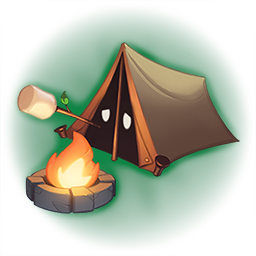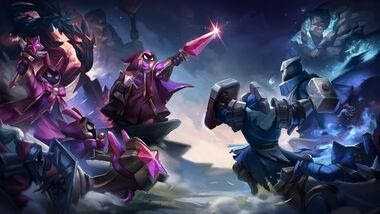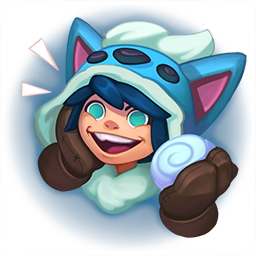League of Lingo – A Glossary of League of Legends Slang
Communication is a huge part of any game of League of Legends, so let’s go over some unfamiliar terms that might be getting thrown around whenever you boot up the game.
Communication is a huge part of any game of League of Legends, so let’s go over some unfamiliar terms that might be getting thrown around whenever you boot up the game.
While there are many aspects of League of Legends that are difficult to learn for incoming players, ranging from champion kits to item passives to the map itself, the terminology used by League’s player base can also be a huge hurdle given the amount of unofficial slang present in an experienced player’s vocabulary. It seems like almost every monster, item, stat, and maneuver has a colloquial name that would be pretty impossible to define without somebody there to bring you up to speed. The goal of this guide is to ensure that when you’re trying to win a game of League, the terminology used by your teammates isn’t impeding your progress. To achieve this, let’s go over a handful of terms that you might see in an average game of League of Legends.
Backdoor
The sneaky strategy of ‘backdooring’ refers to when a champion attacks an open enemy structure, like the nexus or an inhibitor, while the rest of the enemy team is outside of their base. While this strategy is often risky, as the backdoor-er is susceptible to being killed or otherwise stopped by enemies who return to fight them, it can also occasionally be game-winning when done properly.
Camping

Named after the act of pitching a tent and staying in a location for a period of time, camping is when a jungler focuses all of their attention onto a single lane, visiting it repeatedly in order to grant their allies in that lane a lead and put the enemies in that lane behind. While this strategy can be frustrating to deal with, it also places the camper at somewhat of a disadvantage, as the teammates of the individual(s) being camped can often plan around this and make plays on the other side of the map.
Carry
As the name implies, a ‘carry’ is somebody who is carrying their team to victory, typically by being so ahead of the enemy that they are both difficult to kill and incredibly capable of killing anyone in their way. Often, a carry is an individual of high interest to both teams, as their own team wants to play around them and defend them as much as possible while the enemy team wants to focus them down so that they can win more fights.
‘C.C.’ or Crowd Control
A common term across a wide number of games, C.C. (or crowd control) refers to an effect which impairs your character’s agency. In League of Legends, crowd control is typically divided into two key varieties: soft and hard. Soft crowd control effects, such as slows and silences, are deemed such because your character still retains the ability to move and attack. Alternatively, hard crowd control effects typically immobilize your character, remove their ability to attack freely, or sometimes both.
CS, CSing, or ‘Creep Score’

While this may outwardly seem to refer to a popular competitive FPS, CS or ‘Creep Score’ is a term originating from another MOBA: DOTA. In short, where DOTA has creeps, League of Legends has minions. As a result, your ‘Creep Score’ is the number of minions and monsters that you have killed, displayed both on the scoreboard and at the top right of your screen. Despite the fact that the four different types of minions (Super, Siege/Cannon, Melee, and Caster) all reward different amounts of gold upon being slain, they each increase this ‘creep score’ value by one. Alternatively, despite the fact that monsters provide a wide variety of rewards when slain, any given ‘camp’ of monsters increases this amount by four.
Fed
The term fed is typically used to describe a player who is ahead in gold, items, kills, or any other sizable metric which puts them at an advantage over other players in the game. This term comes from the idea that they are being ‘fed’ resources, either intentionally by their own team through letting this player farm additional minions or by the enemy team ‘feeding’ this player kills. Regardless of the source, when a player is fed, they are often going to be the win condition that the respective team wants to play around.
Freeze
This cold tactic is one that many laners will use when ahead, allowing them to position the wave in a way where it doesn’t push forward nor does it get pushed – ‘freezing’ it in place. The benefit of this strategy is that it often allows the ‘freezer’ to zone their opponent off of the wave, denying their enemy experience and gold while granting themselves the ability to farm freely. When done correctly, the enemy’s jungler often has to gank the lane in order to break its frozen state, occupying more of the opposing team’s resources.
Gank
This common term refers to the act of a jungler entering a lane so that they can assist their own laners in either pushing the enemy away or killing them. What makes this term so commonly used is that, on top of farming the jungle and contesting objectives, ganking lanes is one of the core duties of a jungler. By ganking lanes, junglers not only help their team gain advantages within their own matchups, but they also generally apply pressure to the map. When done effectively, this pressure can force the enemy into a certain playstyle that a savvy jungler can take advantage of.
Going Golden
When a champion ‘goes golden’, it is because they have entered stasis, an often self-inflicted crowd-control effect which makes the afflicted individual untargetable and invulnerable while also rendering them unable to move or take action. While abilities like Bard’s Tempered Fate can apply this to champions, many characters attain this effect by activating a Stopwatch or Zhonya’s Hourglass. While these activatable items have a high cooldown, the effect of ‘going golden’ is incredibly valuable, allowing a champion to dodge incoming abilities, wait for their abilities to come off of cooldown, and take a second to assess the state of a fight.
Item Nicknames
Since many item names tend to be long and verbose, players often choose to shorten item names down to a few letters whenever they’re referring to them in the in-game chat. Let’s look through a few common items and their short-hand synonyms.
Archangel’s Staff: AAS
Black Cleaver: BC
B.F. Sword: BF
Blade of the Ruined King: BoRK, BotRK
Bloodthirster: BT
Control Ward: Red/Pink
Essence Reaver: ER
Guardian Angel: GA
Health Potion: Pot
Infinity Edge: IE
Rabadon’s Deathcap: Hat
Jungle Camp Synonyms

While many items and champions have nicknames that certain groups use, jungle camps are rather notorious for people not calling them by their official names. Let’s run through a few common synonyms for some jungle camps that are more prone to nicknames than others.
Baron Nashor: Baron, Nash
Blue Sentinel: Blue, Blue Buff
Crimson Raptors: Chickens, Birds, Wraiths
Krugs: Rocks
Red Brambleback: Red, Red Buff
Rift Herald: Shelly, Harold
Scuttlecrab: Scuttle, Crab
Kiting
Similarly to how a kite floats far above the ground, kiting is a mechanic employed primarily by ranged characters wherein they deal damage and maintain a fair distance from advancing enemies at the same time. This strategy is most effective against melee champions with low mobility, as their core gameplay of running the enemy down and killing them once they get there falters in the face of consistent incoming damage while they try to approach. Inversely, it is also true that champions with lots of mobility are often quite difficult to kite, as they can get into close-range against a kiting champion quickly, mitigating the damage potential that kiting has.
Leash
Instead of referring to the tool for walking a dog, giving your jungler a ‘leash’ refers to helping them slay their first camp (which will typically be the Blue Sentinel or the Red Brambleback). The purpose of this is to ensure that the jungler, who is usually weak in the early game, can get a decent, healthy start to their pathing. Since you can leash and arrive to your lane before any of the enemy’s minions die, leashing is strong because it allows you to help your teammate while losing nothing in the process.
M.I.A
While this term is relatively common outside of League, it is important to note it here as well because there is an entire ping dedicated to it: the missing ping (a.k.a. the yellow question mark that gets spammed at you when you miss the cannon minion). When an enemy is M.I.A. or ‘me-ah’, they are missing-in-action, likely on their way to another lane or backing so that they can spend their gold. While the ‘missing’ ping does often get misused, paying attention to its use can sometimes notify you of an incoming threat, helping you avoid danger and death.
O.O.M
Moving from one acronym to another, O.O.M (sometimes pronounced like ‘zoom’ without the ‘z’) refers to a champion being ‘out of mana’, implying that they lack the mana to be able to cast their abilities. When a champion is O.O.M., they are often vulnerable to being ganked or otherwise attacked by enemies, so this callout is often a plea for assistance so that your team can take advantage of an enemy who is extending themselves without having the mana to stay safe. Alternatively, when your champion is ‘O.O.M.’, you can tell your allies that and accordingly retreat so that you don’t get caught out while unable to defend yourself.
Proxy/Proxy Farming
While rare, proxy farming is a strategy wherein a champion kills minions between two enemy turrets rather than between an allied and an enemy turret. On one hand, this strategy is incredibly risky, as it places the proxy farmer in a position where they are vulnerable to an incoming jungler and have to take damage from minion waves. On the other, this strategy can also force the champion whose minions are being proxy farmed into a difficult position where they cannot destroy the enemy’s tower due to not having any minions to push with.
Role
In League of Legends, your role typically determines where you go on the map for the early part of the game and what type of champion you play. Since there are five different roles, let’s briefly summarize their core traits.
Top: Top laners go to the uppermost lane on the map, and typically play bulkier champions such as fighters or tanks.
Jungler: Often shortened to jg, the jungler slays monsters in the areas between the lanes, secures neutral objectives such as drakes, and ‘ganks’ lanes to help their team. While any champion could theoretically jungle, the best junglers are those who can slay monsters quickly while remaining at high health.
Middle: Often referred to as mid, the mid-laner occupies the lane in the middle of the map, aiding the jungler or other lanes where necessary. The middle lane hosts a diverse variety of champions, ranging from fighters to mages to slayers.
Bottom: Often referred to as bot or ADC (Attack Damage Carry), this is one of two roles that go to the bottommost lane. Bottom-laners are often long-range marksmen who deal physical damage from a distance, although mages are not terribly uncommon in this role.
Support: Commonly shortened to supp, supports are the second role that goes into the bottommost lane. Their main goal is to aid the bottom-laner, typically playing a controller-type champion in order to do so.
Roam
Thinking back to the idea of ganking, roaming is the equivalent tactic for champions who are bound to a lane. When a champions roams from their lane to either help their jungler with an objective or to assist another lane, they often do so at the expense of losing potential experience and gold that they could have gotten from staying in their own lane to farm. However, the advantages gained from roaming often outweigh these possible losses, as roaming can ensure that your team dominates the map while providing gold via kills and objectives to everyone involved.
Simple Common Abbreviations
While there are some abbreviations and acronyms in League that require a bit of explanation, like O.O.M, CS, or M.I.A., there are many more which can be explained in just a few words. Let’s quickly take a look at some of these short and sweet slang short-hands.
AA: Auto-attack, the basic attack that your character does when right-clicking a target.
AD: Attack Damage, the stat that champions who deal physical damage rely on.
ADC: Attack Damage Carry, a traditional term for a marksman played in the bottom lane.
AP: Ability Power, the stat that champions who deal magic damage rely on.
AS: Attack Speed, the stat which determines how quickly your champion can basic attack.
CD: Cooldown, the time between when you use an ability and when you can use it again.
DPS: Damage Per Second, a term which can refer to the metric of how much damage a champion does per second or a champion who deals consistently high damage.
EXP/XP: Experience, the reward for slaying monsters and champions which in turn determines your champion’s level.
FoW: Fog of War, the areas of the map that are outside of your vision.
GG/GGWP: Good Game and Good Game, Well Played, often said at the end of the game.
GL/GLHF: Good Luck and Good Luck, Have Fun, often said at the start of the game.
MS: Movement Speed, the stat which determines how swiftly your character moves.
Snowball

Just like how a snowball would theoretically pick up more and more snow while rolling down a snowy hill, growing larger over time and becoming unstoppable, a snowballing character in League is one who continues to push their advantages over the enemy team in order to grow unstoppably strong. A snowballing enemy champion often needs to be stopped early into their snowballing process in order to ensure that you can still win the game, as they will eventually be so much stronger than every other champion that they’ll carry their team to victory and roll right over yours. Alternatively, if one of your allies is snowballing, it is often advisable to grant them as many resources as possible and to aid them wherever you can.
Structures
When League players refer to a ‘structure’, they’re typically referring to any objective that does something to prevent either team from winning the game. Structures come in three different types, so let’s take a quick look at them.
Turrets: Sometimes referred to as towers, turrets are the tall, statue-esque structures that occupy the lanes and bases so that they can attack any enemy minion or player within their range.
Inhibitors: Sometimes referred to as inhibs, inhibitors are the circular structures at the three entrances of either base. Once destroyed, the team who now lacks an inhibitor also has to deal with incoming Super Minions, the bulkiest and strongest type of minion.
The Nexus: Sitting right outside of either team’s fountain, the destruction of this structure is what ends the game, with the team who loses their nexus losing the game.
‘Split’ or Splitpush
‘Splitting’ or splitpushing is a strategy wherein a champion (typically one who has the summoner spell teleport available) pushes minion waves in either the top or bottom lane in an attempt to lure the enemy team into sending multiple players to their location. The goal of this strategy is to ensure that the rest of the splitpusher’s team are able to take any fight with an advantage in numbers, as if two enemies are engaged with the splitpusher, their remaining four teammates can take an advantageous fight against the remaining three enemies. While this strategy is difficult to coordinate and often only works when the splitpusher is ahead in items and gold, it can be incredibly effective at forcing enemies into a difficult position where they cannot adequately answer either incoming threat.
Turtling
This strategy references the defensive capabilities of a turtle, mimicking the turtle’s ability to hide in its shell when threatened by having an entire team hide inside their base while the enemy is at their strongest. This defensive maneuver is often used when the enemy team has recently slain the Baron Nashor or Elder Dragon, as the powerful buffs that they provide are often best dealt with by retreating and trying to repel minion waves rather than fighting head-on.
Concluding Thoughts
From what has been said above, it should be clear that while there are plenty of slang terms that League of Legends players use to describe the game, these terms are all easily definable and are rooted in strategies and mechanics that any player can use. Therefore, if there is one key takeaway from what has been said, it is that knowing these terms and being a strong communicator is a crucial step in becoming the best League of Legends player that you can possibly be. These terms ultimately consolidate several pieces of key information into one or two words, making them a great way to translate a complicated idea or strategy into something easy to say and understand. If you’re able to understand these terms when your allies are using them, as well as being able to use them yourself so that you can make big plays, you’ll surely be able to win more games.